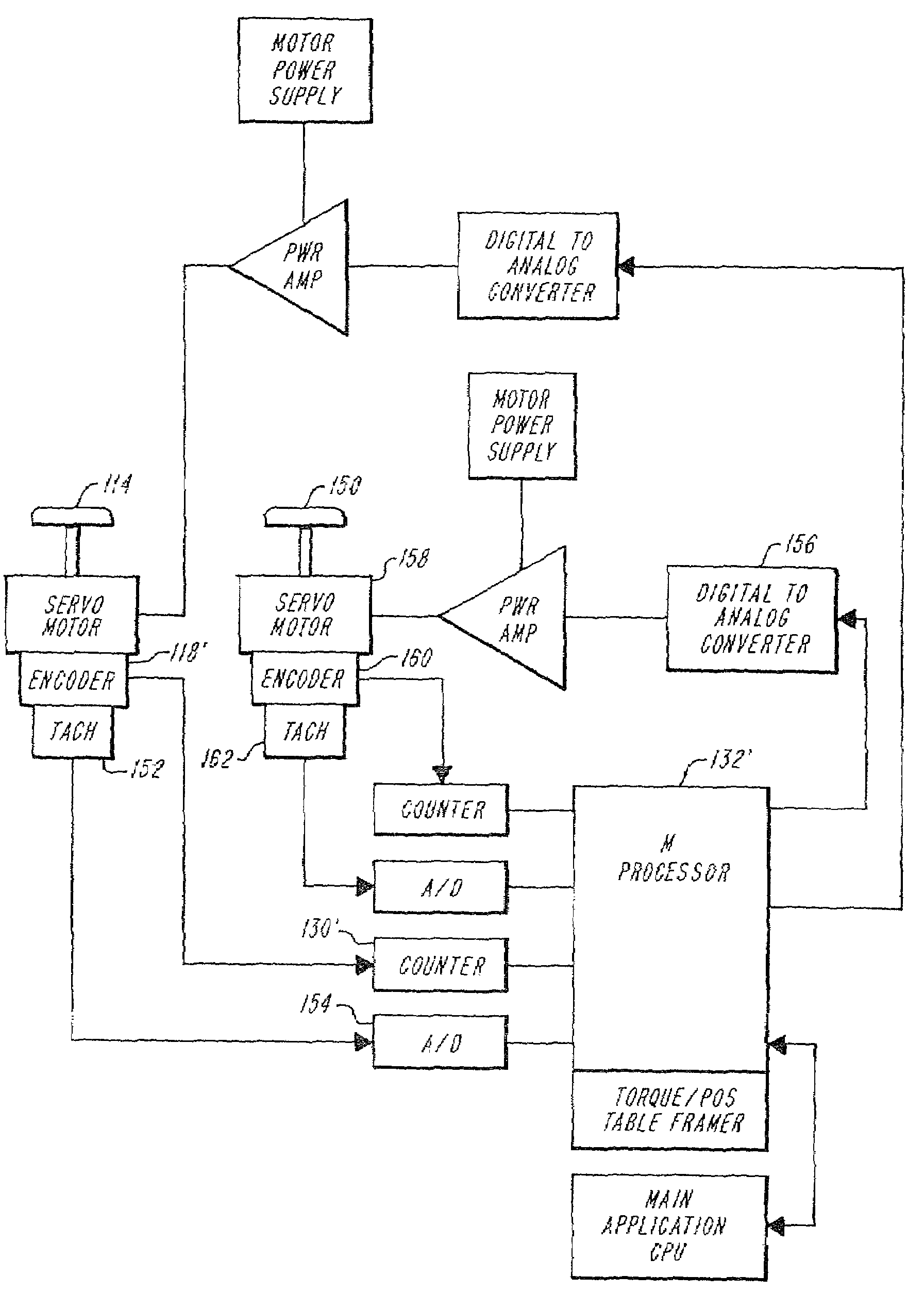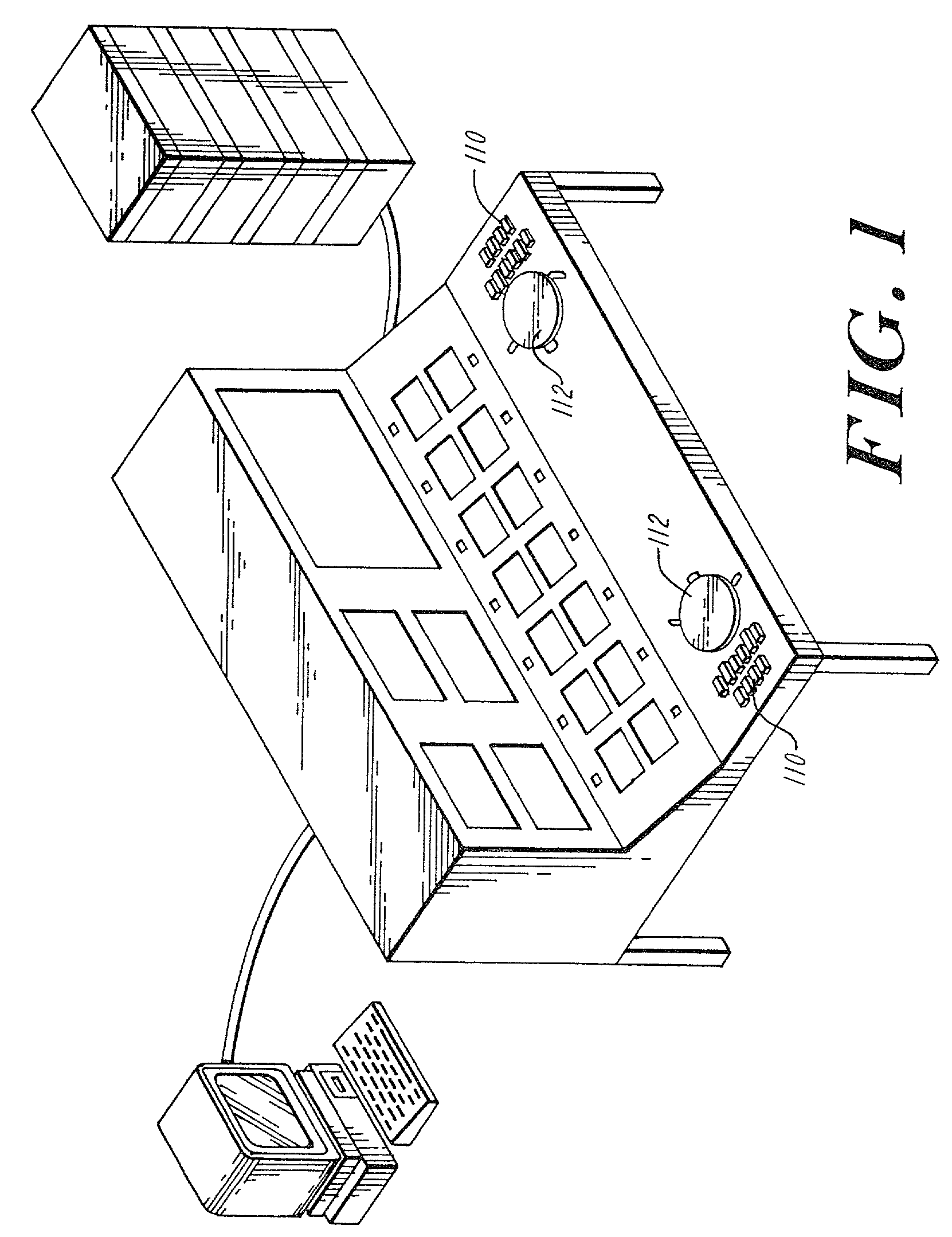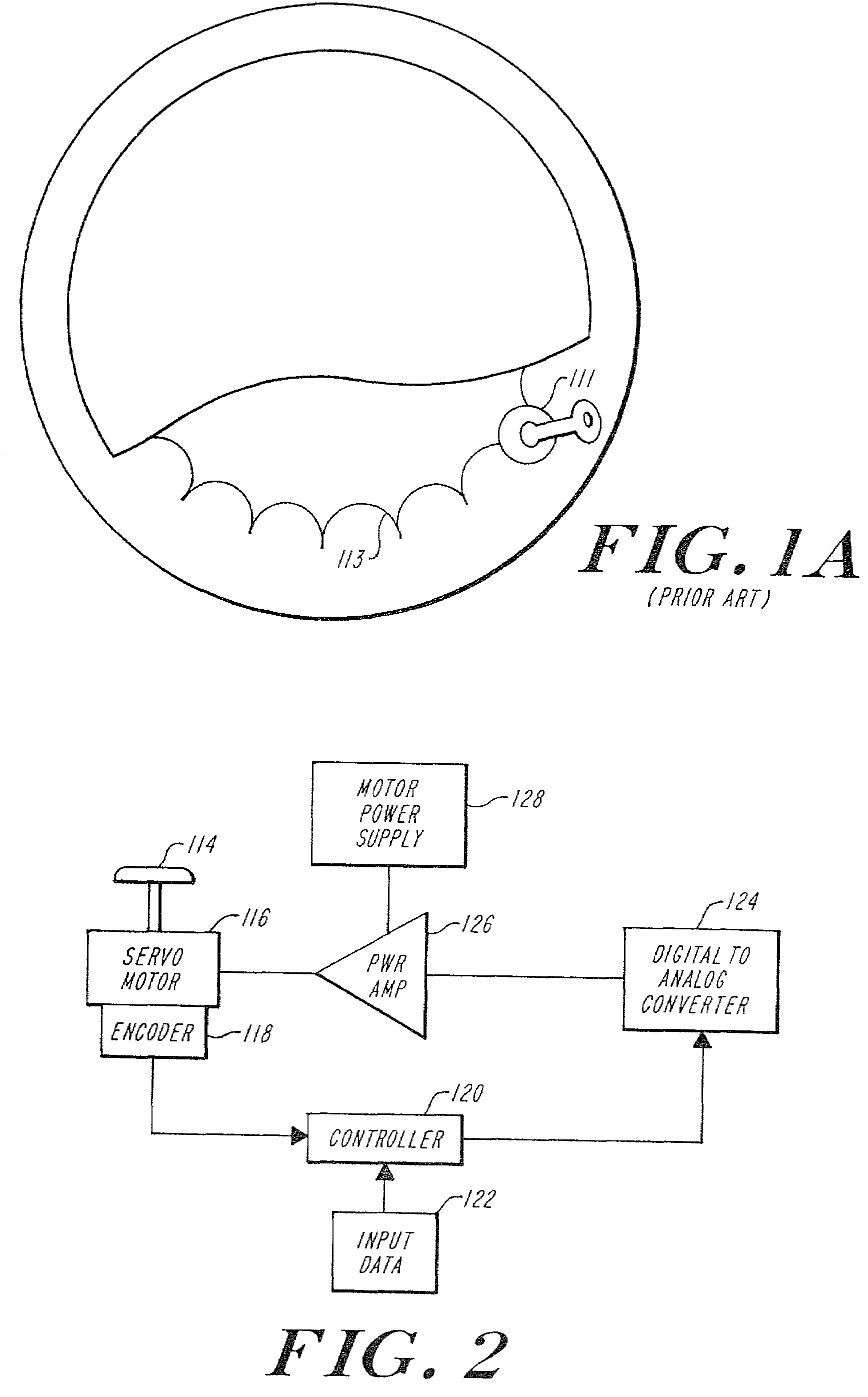Interface device with tactile responsiveness
a tactile responsiveness and interface technology, applied in the field of user interface devices, can solve the problems of limiting the flexibility of visual source material composition systems, significantly increasing the complexity, cost and hardware requirements of flexible systems, disadvantageous wear of actuators, and deterioration of tactile responsiveness, so as to facilitate flexible programming of various torque profiles
- Summary
- Abstract
- Description
- Claims
- Application Information
AI Technical Summary
Benefits of technology
Problems solved by technology
Method used
Image
Examples
Embodiment Construction
[0037]Referring now to FIG. 2, an actuator, such as a rotary actuator having a control knob 114 is attached via a shaft to a servo motor 116. In this illustrative embodiment wherein the actuator is for use in a film / video editing context, the servo motor is a PMI 12FVS motor. In the present application, as discussed in greater detail hereinafter, the servo motor is not used as a motor per se, but rather as a torque controller. The motor never runs at a significant amount of its rated revolutions per minute, but operates normally in this application in a stalled or semi-stalled state. The preferred motor 116 has an installed encoder 118. The encoder 118 is a PMI M23, 300 segment modular encoder having an index and providing 300 cycles per revolution, which results in 1200 waveform edges from index to index. Note that in this illustrative embodiment it is important that the encoder be selected to provide a number of edges which is divisible by factors of two, three, five and eight. Th...
PUM
| Property | Measurement | Unit |
|---|---|---|
| time | aaaaa | aaaaa |
| torque | aaaaa | aaaaa |
| time | aaaaa | aaaaa |
Abstract
Description
Claims
Application Information
 Login to View More
Login to View More - R&D
- Intellectual Property
- Life Sciences
- Materials
- Tech Scout
- Unparalleled Data Quality
- Higher Quality Content
- 60% Fewer Hallucinations
Browse by: Latest US Patents, China's latest patents, Technical Efficacy Thesaurus, Application Domain, Technology Topic, Popular Technical Reports.
© 2025 PatSnap. All rights reserved.Legal|Privacy policy|Modern Slavery Act Transparency Statement|Sitemap|About US| Contact US: help@patsnap.com



